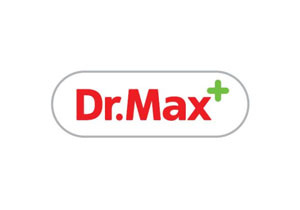
Martin Mihálik
Martin Mihalik is Solution Architect in Hewlett Packard Enterprise. He obtained his master degree on Faculty of informatics and information technologies, Slovak university of technology in Bratislava in Information systems.During his studies he gained first professional skills in position programmer analyst working for Anasoft APR. There he worked on a project regarding the optimization of quality of processes on assembly lines. Beside programming he also familiarized himself with analysis, design and quality metodology Six Sigma. During his studies he as well took part in semestral student exchange program on Linneaus University, Vaxjo in Sweden. After getting back from Sweden he worked beside studying in position of programmer on a telco project at Logica CGI. Since graduating the universtity, in year 2012, he has worked at Hewlett Packard Enterprise. He is involved in development of Enterprsie Architecture as well as the development of new progressive technologies and HPE produducts. He participated on various projects of the Ministry of Interior, the significant project is for instance eID (electronic identification card), NEV (national evidence of vehicles), ILK (integrated Lustration Console). He is owner of certificates: ArchiMate 2 Certified and OMG-Certified UML Professional.
Sign in to ITAPA Health&Care 2025
-
Mobile lustration
-
Use of eID card in the commercial environment
Why should a lecture be interesting?
Estonia is not a country of miracles as it is often publicly presented and it had to get through the harsh initial phases of digitalization of Government too. It has accomplished acceptance of eID card in the commercial sector, however the most influential success factor were economic interests of the one single company. Slovakia, and also many other countries, does not have such advantage at its disposal, yet opportunities how to use eID card almost daily even for access to commercial services appear right now – in times when after 4 years we reached many positive objectives related to eID card.
Identity smart card, also known as eID card, has been introduced in numerous countries across European continent, including Slovakia and Estonia – the showcase of Government digitalization.
In the Baltic country this happened already in 2002, while here in Slovakia 11 years later. After the years elapsed since then, we can observe common parallels and differences between the two countries, but what´s even more important, it is possible to identify success factors of eID cards in commercial sector as well as factors that stand in the way of such accomplishment. Adopted directives, regulations and action plans within the strategic vision of single digital market of European Union opens window of opportunities for penetration of eID into the commercial sphere. Electronic ID card could then offer also to commercial services providers the unexhausted potential with positive economic impacts and at the same time improve the perception of eID by citizens.
Is Estonian story really as perfect and simple as it may appear at first sight? What motivated commercial sector in Estonia to make their services available to consumers via national eID card? And what has Slovakia in common with the recognized leader of digitalization? What are truly the most valuable use cases for eID cards in the commerce? Does any conjunction of interests of citizens, commercial institutions and government exist at all?
Peter Handzus from the DXC Technology will answer these and also many other questions related to practical use of eID in the commercial world. -
Use of eID card in the commercial environment
Why should a lecture be interesting?
Estonia is not a country of miracles as it is often publicly presented and it had to get through the harsh initial phases of digitalization of Government too. It has accomplished acceptance of eID card in the commercial sector, however the most influential success factor were economic interests of the one single company. Slovakia, and also many other countries, does not have such advantage at its disposal, yet opportunities how to use eID card almost daily even for access to commercial services appear right now – in times when after 4 years we reached many positive objectives related to eID card.
Identity smart card, also known as eID card, has been introduced in numerous countries across European continent, including Slovakia and Estonia – the showcase of Government digitalization.
In the Baltic country this happened already in 2002, while here in Slovakia 11 years later. After the years elapsed since then, we can observe common parallels and differences between the two countries, but what´s even more important, it is possible to identify success factors of eID cards in commercial sector as well as factors that stand in the way of such accomplishment. Adopted directives, regulations and action plans within the strategic vision of single digital market of European Union opens window of opportunities for penetration of eID into the commercial sphere. Electronic ID card could then offer also to commercial services providers the unexhausted potential with positive economic impacts and at the same time improve the perception of eID by citizens.
Is Estonian story really as perfect and simple as it may appear at first sight? What motivated commercial sector in Estonia to make their services available to consumers via national eID card? And what has Slovakia in common with the recognized leader of digitalization? What are truly the most valuable use cases for eID cards in the commerce? Does any conjunction of interests of citizens, commercial institutions and government exist at all?
Peter Handzus from the DXC Technology will answer these and also many other questions related to practical use of eID in the commercial world. -
The future of electronic documents in Slovakia – concept MultiPass?
Have you seen the movie The Fifth Element? And do you remember the scene with actress Milla Jovovich (the movie character LeeLoo with orange hair) who shows a card with her photograph everywhere she wants to enter and saying only one word she has learned in the new world? "Multipass".
Yes, these science fiction scenes, where for the "all" would be sufficient only one identity card seemed to be amusing for us. An even bigger smile on our face we would have if filmmakers would implement this evidence on the microSD card and this card would be inserted into the phone. And when they would have shown to you that in addition to the electronic identity card, you can have on the microSD card in mobile also electronic driving license, electronic vehicle registration, electronic health card and biometric passport, you would shook your head with incredulity saying that it is not safe and not possible. The story takes place in the future in the year 2263. It appears that the experts in HPE would surprised not only the film makers and already about 247 years earlier they would like to show you in which direction the development of electronic identification documents is progressing. What could bring the multipass solution to us, the citizens, and how it should be used in e-government services? If you are interested in technology background of Multipass concept, just come to listen to the presentation of Martin Mihalik who will be delighted to share with you the details of the solution. -
How to help to lower the amount of car accidents on Slovak roads?
Application of the law of strict liability for automatical traffic infringement system
Why not to miss the presentation?
In western countries we lately meet more often a trend of automatic traffic penalty systems. Introduction of traffic information system will bring a number of relevant benefits also to Slovakia.
Executive Summary:
The Law on objective responsibility give an opportunity to develop automatic traffic information system that could cover the whole process of traffic offense: capturing the offense through certified measuring device, classification of type of offense, automatic recognition of vehicle identification in the photography, screening of data in agenda systems, printing and delivery of the ticket to the citizen, payment management, and administrative actions. Last but not least, the income from penalties will provide high return of investments.



















